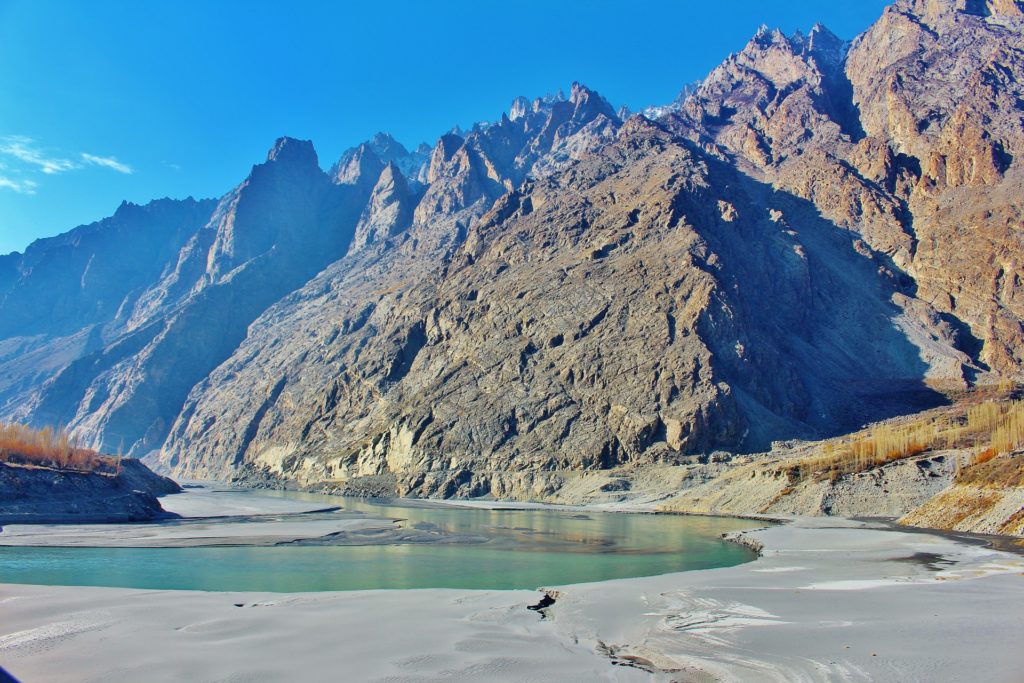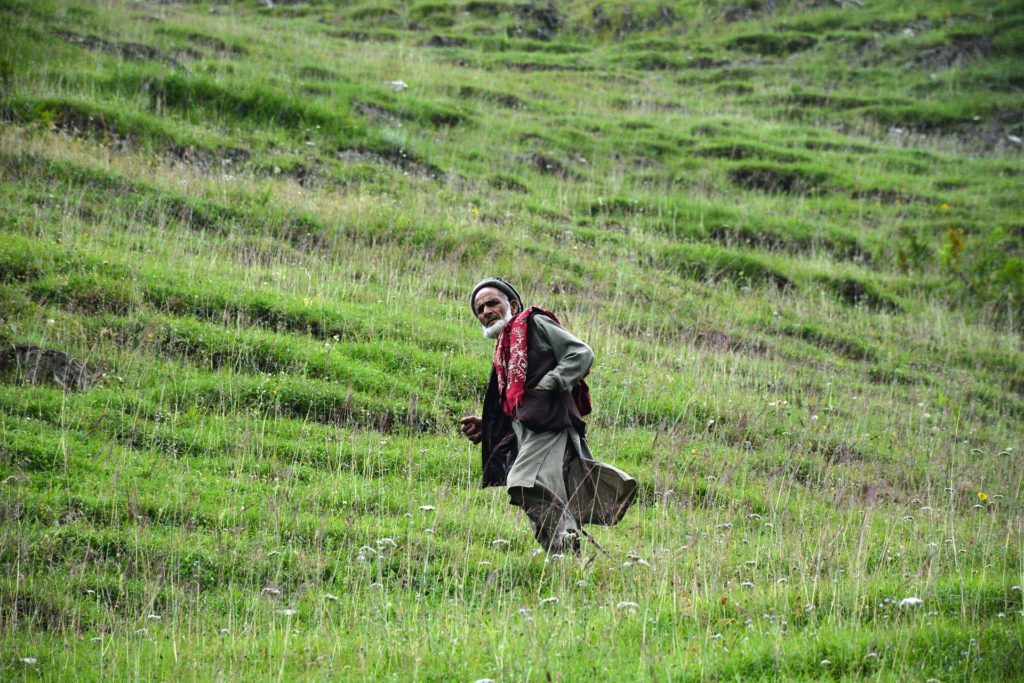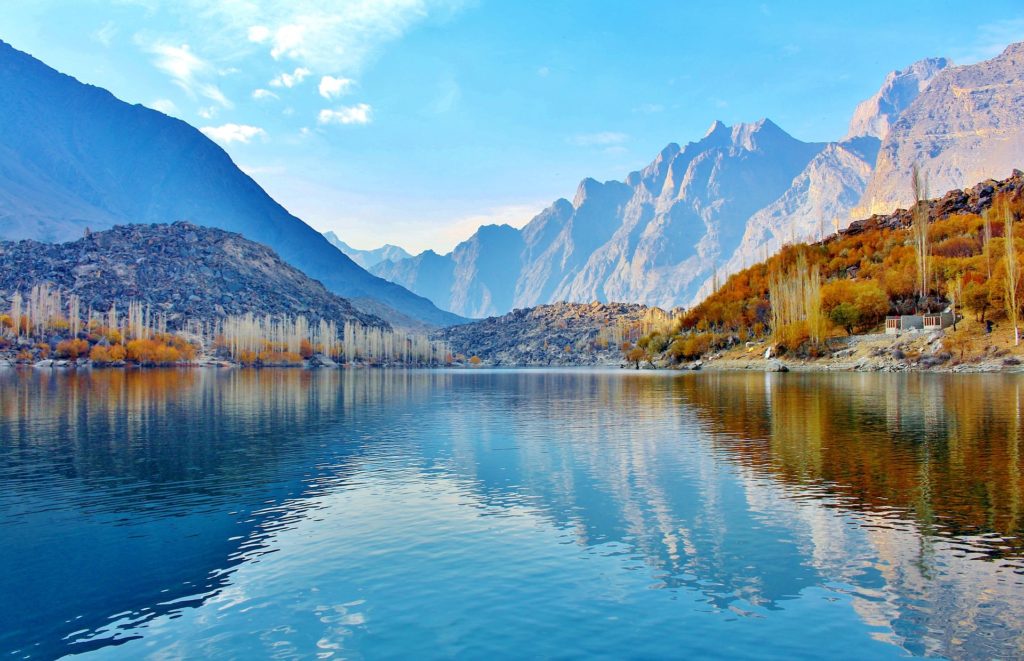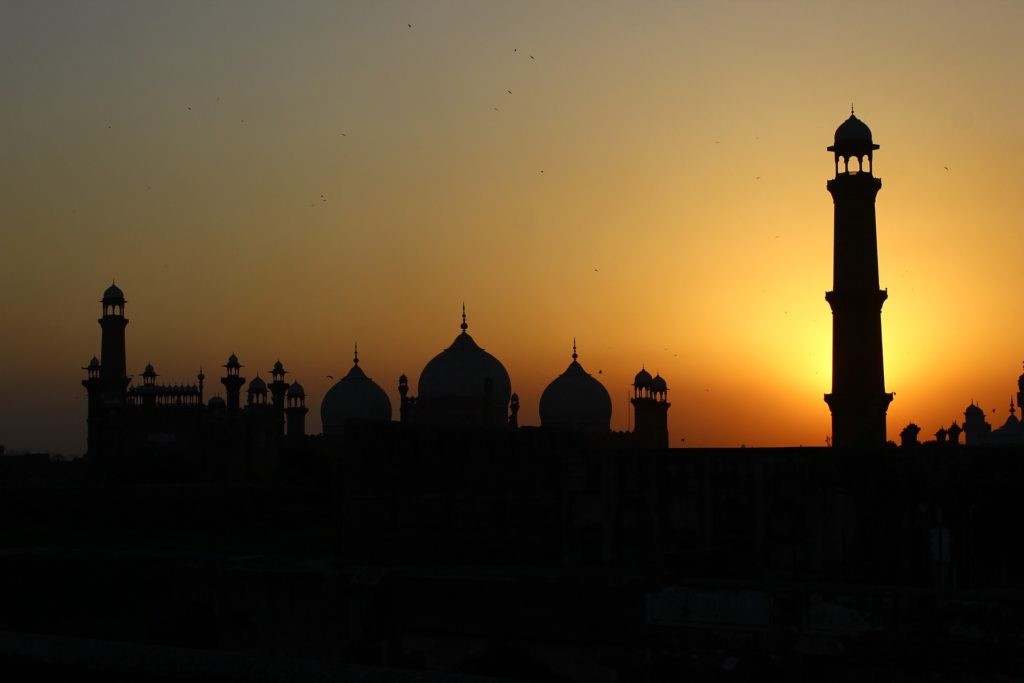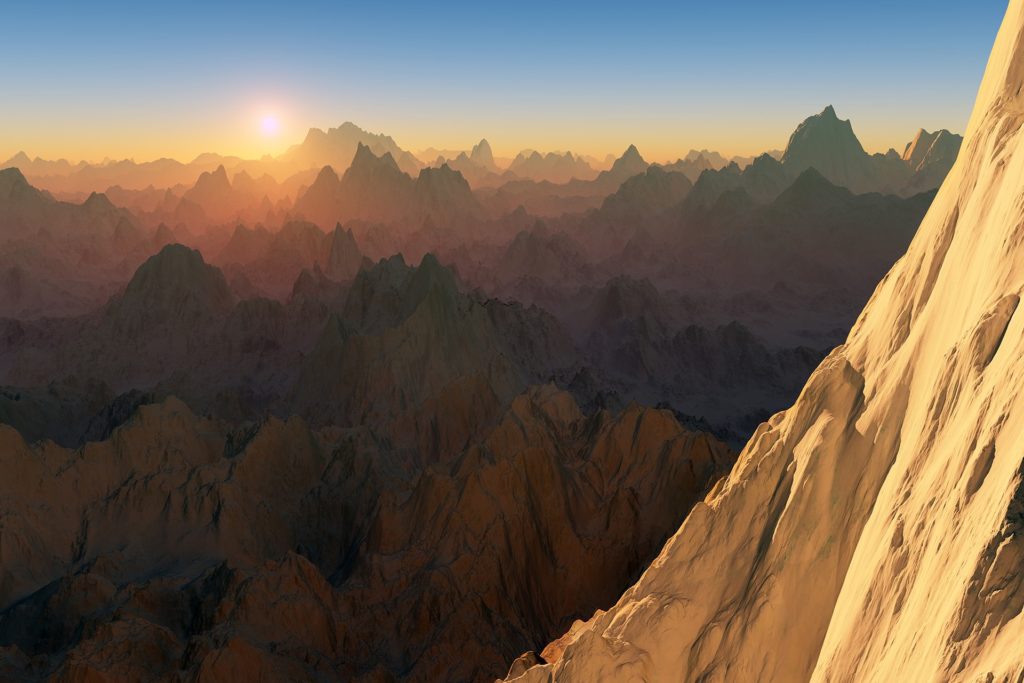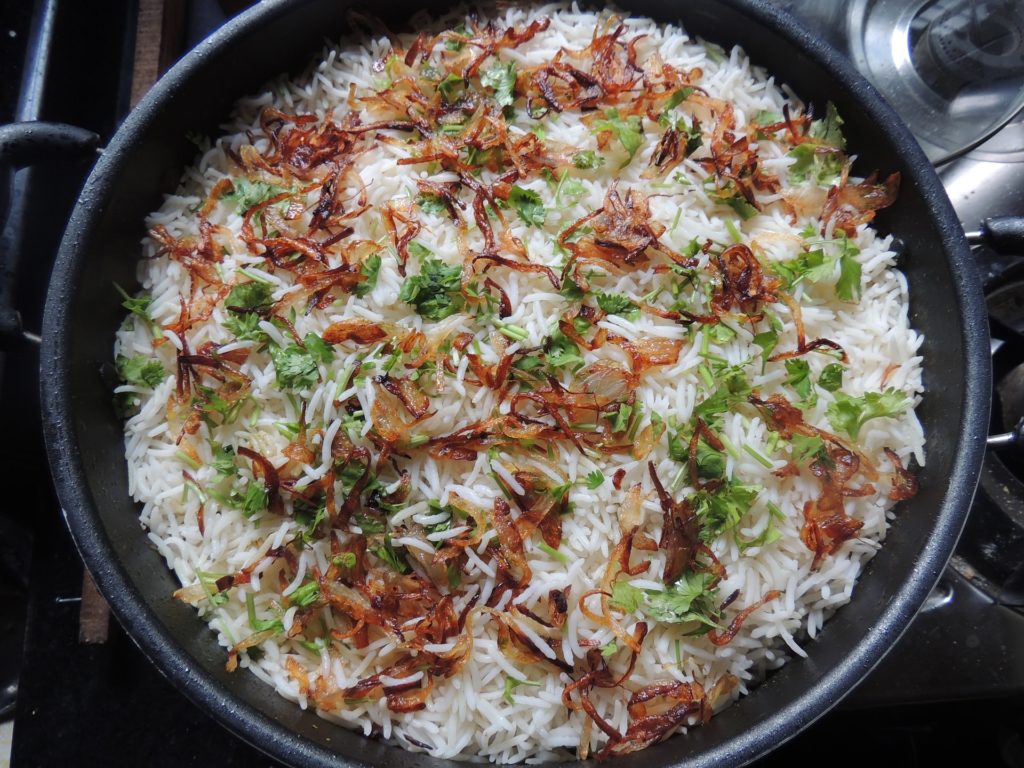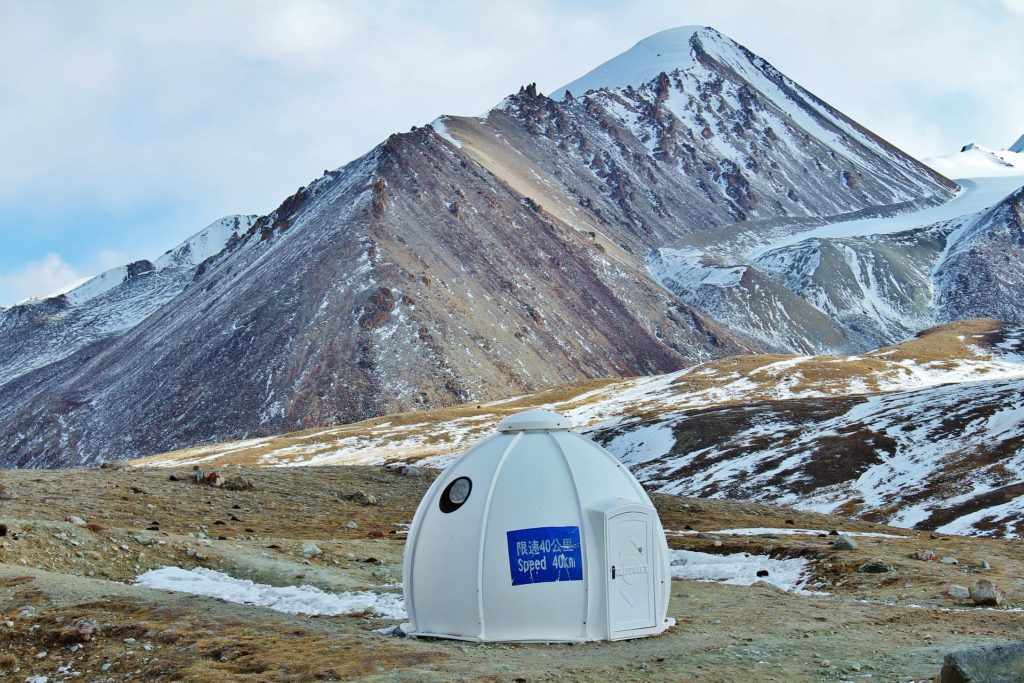Backpacking in Pakistan
Backpacking in Pakistan is still a little adventure – also because many travellers don’t really have it on their screens yet. Yet Pakistan is not only an extremely versatile country that bridges the gap between living traditions and digital modernity.
It is actually a must for all South Asian fans – after all, today’s Pakistan is an essential part of the cultural area “Hindustan”, and anyone who really wants to understand this region and its conflicts should definitely include Pakistan in their list of travel destinations!
Pakistan an artificially created state in the course of decolonization. The division of the former British India was an attempt to separate the predominantly Muslim northwestern region of British India from the Hindu part. Pakistan has been independent since 1947. Initially, today’s Bangladesh as East Pakistan was part of this new entity.
This only changed in 1971 as a result of the so-called Bengali language movement – Bangladesh was born. According to the constitution, Pakistan is an Islamic republic. Today about 190 million people live in Pakistan and the trend is rising. The high birth rate is not necessarily a blessing: In view of the problems in the area of health care and education, the strong population growth threatens to further aggravate the socio-economic situation in the country.
The average per capita income in 2016 was still below 1500 US dollars per year; however, this indicator is only of limited significance due to the large difference between rich and poor. Nevertheless, the poverty rate has halved since 2002 – so there is still reason for hope.
In economic terms, Pakistan is a market economy that has been growing steadily since the turn of the millennium. GDP growth in 2017 was 5.0%. The discrepancy between urban and rural areas is problematic. The urbanisation rate, i.e. the share of the population living in cities in the total population, is 39%. Agriculture still plays an important role. Although this sector accounts for only 25% of GDP, almost half of the population works in the agricultural sector.
The widespread corruption is also an obstacle. Particularly in the tribal areas, Pakistan is struggling heavily with arms trafficking and drug smuggling, but also with the smuggling of consumer electronics. In addition, many parts of the country lack a reliable, well-developed infrastructure, which also hampers economic development. Chinese direct investments, in particular, are expected to remedy this situation in the coming years.
Culture in Pakistan
Pakistan is culturally anything but homogeneous, and the division of states has torn apart the entire cultural region of “Hindustan”. Many Pakistanis still feel more like “Hindustani” today. This cultural diversity and the impressive cultural heritage of Pakistan make this country such a great destination.
Also linguistically the differences between Pakistan and the southeast neighbour India are not very large. Urdu spoken in Pakistan differs from Hindi only in a few linguistic peculiarities. The main difference is that Urdu uses the Arabic alphabet, while Hindi uses the Devanagari alphabet, which was already used in ancient Indian, Sanskrit.
Ethnically, the Punjabis dominate, accounting for 48% of the population. The Pashtuns, Sindhis, Saraikis and Muhajirs are about equal minorities. There are also many other very small ethnic groups. In the Islamic Republic of Pakistan, 96.4% are Muslims.
Especially in the big cities, above all Islamabad and Karachi, a strong cultural change can be observed among the young generation. The young generation, especially the well-educated middle and upper classes, are breaking up old traditions and redefining Pakistani culture. In the countryside, on the other hand, old traditions and customs are still much more strongly adhered to – but this is also quite typical and not specific to Pakistan.
Backpacker Budget in Pakistan
Pakistan is one of the dream countries for backpackers who travel on a minimal budget. Hospitable people who like to take in foreign travellers make it easy to save money when staying overnight and to establish maximum contact with the local population.
The absolute minimum budget (accommodation, food, transport) per day is about 20€. However, this also presupposes that you often resort to couchsurfing. If you plan on 30€, you are on the safe side and don’t risk sitting somewhere “on the dry land”. If you’re on a medium budget and staying in mid-range hotels, you should take into account about 70 € per day.
Car hire in Pakistan
It is easy to book a rental car in Pakistan. It is not necessary to book a driver, and in most cases vehicles rented in Lahore or Islamabad, for example, can also be “taken” to other provinces, so they are not locally restricted in use.
Sometimes it is reported that cheap local car rentals cause many problems and do not operate completely reliably. Somewhat more expensive, but absolutely reliable, are international providers such as Avis and Europcar. With these providers, however, you must expect at least 200-250 € per week.
Public transport in Pakistan – Taxi Driving in Pakistan
Driving by taxi on long distances, which are also served by buses, is rather unusual in Pakistan. In the city, however, they are a good – albeit of course more expensive – alternative to buses and minibuses. Official taxis in Pakistan all have a taximeter. Especially for women travelling alone it is advisable to take a taxi after dark.
One of the best known taxi companies in Pakistan is Metro Cab.
The price for a taxi is between 20 and 60 Rs. per kilometre, plus a flat rate of 100-150 Rs. The prices vary from city to city. So it is best to find out in advance what the usual rates are at your destination.
Bus travel in Pakistan
With the bus you are in Pakistan straight on long distances cheaply on the way. There are bus connections between all major cities in Pakistan. However, the roads beyond the big cities are not very well developed, the journeys take accordingly long. Most public buses are also quite crowded. Thus, one travels more comfortably with trains – at least if one decides for the 1st class.
Normal inner-city bus transport is segregated according to gender. Women who travel alone have it a little difficult here, since it is not usual in Pakistan for women to travel alone – in the bus this can sometimes lead to problems with the allocation of seats. For women travelling alone, a taxi is also a better, albeit more expensive, alternative.
Rail travel in Pakistan
Pakistan has a very good railway network that connects all major cities and also serves many smaller towns on the way. You can travel more comfortably by train than by bus – depending on the class you book, of course. There are up to six classes in Pakistan, but not all trains offer all levels of comfort.
The cost of a medium comfort class is about the same as the cost of a bus ride. If you can do without comfort, you can travel even cheaper by train than by bus. Conversely, for a little more money, you don’t travel uncomfortably on Pakistani trains.
However, they don’t necessarily have the best safety standards – and you have to be prepared for delays and some chaos…
Backpacker Route in Pakistan
Depending on how much time you have, you can of course plan your routes differently. In Pakistan you can easily spend two months. We have put together two sample routes for you – both are based on an open jaw flight, i.e. you travel to Islamabad and back from Karachi.
Domestic flights are not very expensive in Pakistan. So if the open jaw flight is too expensive, you can book a domestic flight back from Karachi to Islamabad. However, you should plan an extra night in Islamabad before you return home – something can always go wrong or be delayed.
With the short route we missed the side trip to the north of Pakistan. Of course a short route is also conceivable, which concentrates especially on the north and the mountain region. Above all, we thought about it: How do you see the most of this beautiful country in the shortest time? That guided us in designing the “Pakistan for those in a hurry” route.
Route 1: Pakistan for those in a hurry (12-14 days)
- 3 days Islamabad – city tour, of course with visit to the Pakistan Monument
- 3 Days Lahore – Shalimar Bagh, Lahore Museum (Historical Museum), Badshahi Mosque
- 1-2 days Faisalabad – city tour through the “Manchester of Pakistan”, center of the textile industry, visit of the bazaars and the clock tower in the center of the city.
- 2 days Larkana – Mohenjo-daro, Mausoleum of the Bhutto family
- 2 Days Hyderabad – Sindh Museum on the History of the Province
- 3 Days Karachi – Clifton Beach & Port Grand, Mohatta Palace Museum, Shopping in Dolmen City
- Return flight from Karachi
Route 2: Pakistan intensive (approx. 30-35 days)
- 3 days Islamabad – city tour, visit the Pakistan Monument, Pir Sohawa & Margalla Hills
- 1 day Gilgit – important starting point for trekking tours in the Karakorum Mountains
- 5 days Karimabad – explore nature and culture of the Hunza Valley
- 1 day Islamabad – city tour, of course with visit of the Pakistan Monument
- 2 days Mirpur – Khari Sharif (Center for Islamic Studies, where also shrines of important Sufi saints can be found), Ramkot Fort (Fort from the 16th/17th century)
- 3 days Lahore – Badshahi Mosque, Shalimar Bagh, Lahore Museum (historical museum), Wazir Khan Hammam
- 1 day Faisalabad – city tour through the “Manchester of Pakistan”, the centre of the textile industry.
- 2 Days Multan – Prahladpuri Temple, Shrine of Shah Gardez
- 2 days Bahawalpur – Derawar Fort (impressive 9th century fort), Noor Mahal Palace (built 1872 in Italian style)
- 2 days Sukkur – Hindu pilgrimage site Sadh Belo
- 2 days Larkana – Mohenjo-daro, Bhutto Mausoleum
- 3 Days Karachi – Clifton Beach & Port Grand, Mohatta Palace Museum, Shopping in Dolmen City
- Return flight from Karachi
Travel Times in Pakistan
Like many countries in the South Asian region, Pakistan has a great natural diversity that makes it difficult to make a general statement about the best travel periods.
At its core there are three zones, the lowlands, the Balochistan region and the mountainous north. In summer, the lowlands are extremely hot in many parts, with temperatures well above 40°C. Only on the coast is the climate more pleasant. In the highlands in the north of the country the winter is cold and snowy. Traveling is difficult in winter.
It is recommendable to travel to the lowlands of Pakistan in the winter months between November and February, to the high mountains in the north in late spring or early summer.
Backpacker Trips & Tips in Pakistan
Although trips to Pakistan are of course always associated with some security risks, one can move freely in most regions and is relatively safe. Of course, attacks and short-term changes in the local security situation can always be expected. So pay attention to what is reported in the local media and ask locals what you should pay attention to and which places or regions you should avoid.
In general, travel to Baluchistan and Khyber-Pakhtunkhwa (border area to Afghanistan) is not advisable – the border crossing to Afghanistan via the Khyber Pass is currently closed to travellers from the border at the latest. Care must also be taken in the border areas with India (Jammu and Kashmir regions). As a rule, the borders cannot be crossed without special permission – tourists are usually not granted permission.
Otherwise you can – as already mentioned – move around quite freely in Pakistan and be relatively safe on your way. Here are a few of the highlights that you should not miss out on.
Backpacker Highlights in Pakistan
Islamabad & Surroundings
If you do backpacking in Pakistan, your journey will probably start in the capital Islamabad. Reason enough to start with the most important highlights of the capital! The Pakistan Monument, which was completed in 2007, is definitely worth seeing.
It is built in the shape of a gigantic flower whose petals represent the provinces and regions of Pakistan. Reliefs inside the leaves show scenes and symbols from the individual regions. The monument is supposed to symbolize the unity of the Pakistani people – and is a truly impressive and aesthetically perfect monument that you should definitely have seen!
Close to Islamabad lies Pir Sohawa, a kind of park and vantage point surrounded by green nature. From here you have a great view over Islamabad and enjoy the peace of nature at the same time. There is plenty to photograph here. The place is a popular excursion destination for Pakistanis – there are also numerous restaurants and picnics.
Karachi
Karachi, Pakistan’s largest city, is the country’s economic center – and undoubtedly the most culturally diverse and liberal place in Pakistan. Of course, there is a lot to see in Karachi; one of the things one should have seen is the Mohatta Palace Museum, which exhibits mostly modern art.
However, the palace that houses the museum is well worth seeing! If you are Karachi, you should of course also have been to the harbour. In Port Grand you will find delicious food, lots of entertainment and you can take a walk on the pier. For shopping, Dolmen City is also located on the coast, right on the Beach Road next to Clifton Beach.
Lahore
If you are on a backpacking trip through Pakistan and also want to visit Lahore, take a look at the Badshahi Mosque. The Badshahi Mosque is Pakistan’s second largest mosque and was built in the middle of the 17th century by Grand Mogul Aurangzep. It is not only one of the largest mosques in the world to this day, but also a unique architectural masterpiece.
A visit can be well combined with a stroll through the old town and a visit to Fort Lahore, which is directly opposite. Of course, the Shalimar Gardens (Shalimar Bagh) are also indispensable for a visit to Lahore. The unique garden is part of the UNESCO world cultural heritage. It was laid out in the 17th century on behalf of Emperor Shah Jahan.
Backpacker insider tips in Pakistan
Hunza Valley
One of many destinations not to be missed when backpacking in Pakistan is a visit to the Hunza Valley. As the name suggests, it is a whole valley, which is somehow an attraction in itself, but where you can also see and experience many different things. The Hunza Valley is located in Gilgit-Baltistan, in the very north of Pakistan. However, the region is safe and easy to travel.
Hunza was once an independent state that was conquered by the British at the end of the 19th century. The Hunza Valley is part of the old Silk Road, along which the Karakorum Highway (short: KKH) runs today.
The valley is first of all a real highlight: From the central city, Karimabad, which is situated at an altitude of about 2500 m, you have a breathtaking view of the surrounding mountains, especially of the nearly 7800 m high Rakaposhi, whose white snowtop shines in the moonlight as it is enthroned above the landscape during the day.
Just as special as the landscape is the culture of the Hunza Valley. The inhabitants, the Hunzakuts, claim to be descendants of the soldiers of Alexander the Great – but genetic investigations refute this myth. However, the language of the indigenous population remains mystical: it has no relationship whatsoever to any other known languages or language families.
In addition to the landscape, the historical sites, especially the old forts and watchtowers, are also worth a visit. Baltit Fort and Altit Fort are to be mentioned here above all. In and around the Honza Valley there is plenty of opportunity for trekking – organised tours can also be booked if you don’t want to be on your own.
Larkana & Surroundings
Near Larkana you can visit Mohenjo-daro, the place where the oldest remains of the ancient Indus Valley culture (Harappa culture) have been found. The settlement was built around 2500 BC and is a unique cultural-historical testimony that teaches us much about the origins of early advanced civilizations in the South Asian region. At the same time, it holds countless secrets: The complex itself already raises many questions. Moreover, the script has not been deciphered to this day. Anyone who has ever been to Larkana can also take a look at the mausoleum of the prominent Bhutto family of Pakistani politicians.
Backpacker accommodations in Pakistan
For your accommodation in Pakistan there are many options available from couchsurfing to a simple hostel to good hotels.
Couchsurfing is already widespread in Pakistan, and you will have little difficulty finding a suitable host, even beyond the big metropolises. You’ll get the most out of your trip because local contacts are always worth their weight in gold!
You can book hostels in the larger cities via Hostelworld. There you will find a good overview of available hostels at your destination. The prices are relatively moderate. Here are the average prices for a dormitory bed:
- Lahore: 5,82 €
- Islamabad: 12,98 €
If you like it a bit more comfortable, you won’t find it difficult to find good accommodation. Depending on your personal requirements, hotel rooms are available from around €16 per person – for a 3*** hotel you should plan on around €30.
Food & Drinks in Pakistan
Pakistani cuisine is a wonderful interplay of different traditions. The Indian (Hindustani) cuisine meets the Central Asian cuisine here, and the Mogul Empire has also left its mark on this rich and varied cuisine.
The cuisine of Punjab and Sindh is considered very spicy, the typical dishes of the other provinces are considered rather mild in taste. While this rather mild cuisine reflects the influence of Central Asian cultures, Punjab and Sindh are influenced by South Asia.
But there are also many new culinary blends and influences in the major metropolitan areas that reflect the modern lifestyle of urban Pakistan.
Pakistan is a Muslim country and therefore certain rules apply to food. Pork is not eaten. It is still common in some regions and in more conservative circles for men and women to eat separately – so don’t be surprised if you are travelling as a couple and are suddenly separated.
In addition, you should never top up your own glass. Your neighbour will do that for you. Conversely, you must also refill your neighbor’s glass as soon as it is less than half full.
The concrete table manners are however strongly dependent on the company you are in at the moment. In the metropolises, the educated young generation cultivates a much more relaxed, modern style, which is also reflected in the behaviour at the table.
Ramadan, the month of fasting, is strictly observed in large parts of the country. Eating and drinking, but also smoking, are forbidden during Ramadan in public during the fasting hours – be sure to stick to them!
The food in Pakistan, as in the whole South Asian area, is essentially very good and quite cheap. Of course you can also treat yourself to a nice meal in an exquisite restaurant, which is also considerably cheaper than in Europe. But also the food in small restaurants or at street vendors is mostly very tasty and costs between 2 and 3 €. As a daily budget you should calculate about 10 € per person if you want to travel cheaply.
Food in Pakistan
Pakistan is the birthplace of the Tandoor oven, where not only the typical breads like the Naan bread are cooked, but also meat. The cooking in this oven gives many traditional dishes their very specific taste.
One of the traditional dishes you should definitely try is Haleem. This dish can also be found in many other countries of South Asia, Central Asia and the Middle East, each with its own unique flavour. Haleem is a kind of stew prepared with cereals (mostly barley or wheat) and meat and cooked slowly for 7 to 8 hours. This long cooking time gives the dish its typical creamy consistency and ensures that the various ingredients and spices are optimally combined in terms of taste.
From the Sindh kitchen comes the Biryani, a mixture of spiced rice – mostly saffron rice – and meat, mostly beef or chicken. Depending on the recipe, other ingredients are also included, often lemons, tomatoes and potatoes. Sindh Biryani is quite a simple, tasty meal that you can get almost anywhere – even on board almost any flight with International Airlines…
Drinking in Pakistan
Tea is also omnipresent in Pakistan and is almost always served with meals. Unlike in many oriental countries, tea – almost always black tea – is not already served as sugar, but milk and sugar are, as in our country, served separately.
But there are also some national soft drinks. The Sattu, which is based on fine chickpea flour or roasted barley and mixed with water, is particularly tasty. This delicious drink with a “granular” taste is considered a small health miracle weapon. It contains iron and calcium and is given to children as well as older or pregnant women. If you urgently need a strengthening, Sattu is definitely a good idea!
Very popular as a soft drink is freshly squeezed sugar cane juice. You can buy it almost everywhere on the roadside – if you like it mixed with ginger and lemon, it is the perfect summer refreshment. So you shouldn’t miss this, especially in a hot Pakistani summer!
Backpacker Visa and vaccinations in Pakistan
German travellers generally need a visa to enter Pakistan. Visas must be applied for at the Embassy in Berlin or at the Consulate General in Frankfurt am Main before travelling. Who is responsible for you, depends on the federal state in which you have your residence. Single trip visas are issued for 3 months, multiple entry visas for 3 to 12 months.
Only business travellers with invitations and tourists travelling with special Pakistani tour operators receive so-called “visa on arrival” and do not need to apply for a visa in advance. All others will be rejected at the border if they don’t have a valid visa – so make sure you take care of it in time!
According to the entry regulations of the Federal Foreign Office, the following documents are accepted as travel documents:
- Passport: Yes
- Provisional passport: Yes
- Identity card: No
- Temporary identity card: No
- Child Passport: Yes
- Your travel document must be valid for at least 6 months before a visa can be issued.
In the past, there were more problems entering the country if there was an Israeli stamp in the passport. This practice no longer seems to exist – if you want to be on the safe side, it is still better to apply for a second passport.
You should also check with the Federal Foreign Office directly for the latest details on entry requirements before your trip.
Medical Information & Vaccinations for Pakistan
When leaving Pakistan (!) there is a duty for a polio vaccination to prevent the poliovirus, which is still spread in Pakistan, from being “exported” to other countries. Since the spread of the virus in Pakistan is of course accompanied by a certain risk of infection, it makes sense in any case to have the polio vaccination refreshed before travelling to Pakistan.
Further vaccination regulations for the entry to Pakistan do not exist – however, as always, the standard vaccinations according to the current vaccination calendar of the Robert Koch Institute are recommended.
In the lower altitudes (below 2000 m) Pakistan is also a malaria area. Prevention through mosquito repellents as well as wearing long clothes is therefore an absolute must here. In addition, you should take malaria medication with you for chemoprophylaxis. Besides malaria, there are also some other infectious diseases transmitted by mosquitoes in Pakistan – so mosquito protection is the be-all and end-all!
A preventive rabies vaccination also makes sense, as stray dogs, which are widespread throughout the country, represent a great risk of infection.
The medical care in Pakistan does not correspond in particular beyond the metropolises Islamabad and Karachi to western standard. Equip yourself with disposable syringes if necessary – they don’t cost much and don’t take up much space in your luggage, but in an emergency they ensure a hygienically perfect treatment. In Islamabad and Karachi you can count on a very high level of medical care.

